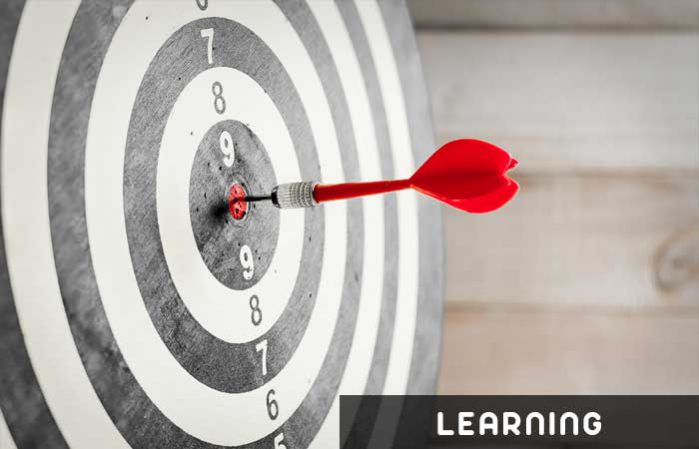
Measure twice, cut once. That’s a phrase you’ll hear whenever you take a carpentry or sewing class – after all, it is so much easier to take a second measurement instead of making a second cut! Skilled craftsmen and tradespeople have long known about the sixth Habit of Mind: Striving for accuracy and precision. The question is – how do we teach it to our children?
The difference between accuracy and precision
Let’s start with the terms. Accuracy is not the same as precision. Accuracy refers to how close you are to the standard or known value (that is, how correct you are). Precision refers to how close your measurements are to each other (that is, how consistent you are). A great metaphor to explain this is a dart board – you want to be both accurate and precise, and hit the bullseye all the time.
For very young children, don’t worry about teaching them the precise meanings. Instead, focus on finding and defining what accuracy and precision mean in their daily lives. Questions you might want to ask include:
When doing an activity: Is your puzzle missing a piece? Which one?
When cooking: What ingredients do we need? How much do we need?
When doing household chores: Is your room clean? What do you need to do to tidy up?
Talking about daily routines: How do we get ready for school? What happens if we miss a step?
Through these and other similar lines of thinking, your child will learn to identify what is accurate (a clean room, a complete puzzle) and how to be precise (measuring cups of flour, following a routine or recipe).
With older children, one way to show them how important accuracy and precision are is to do activities together that require those skills. Origami is easy to do at home, and doesn’t require many additional materials. Depending on what your child is interested in, you can fold airplanes, monsters or even rockets – which will really test how accurate and precise your folds are!
Or spend time in the kitchen with them – baking especially relies on accurate and precise measurements. Read about how to measure ingredients (and why it’s important) here, then gain hands-on experience by tackling a new recipe. Try making kueh lapis – patiently and precisely pouring and grilling each layer will reward you with a rich, delicious treat!
Why accuracy and precision are important
You might be thinking, well, I don’t want to raise a perfectionist child! And you would be right – we want to aim for accuracy and precision, but want to avoid perfectionism. This isn’t about making zero errors, but the pursuit of a habit of mind that seeks to reduce errors, find solutions and aim for results.
Teaching your child to be accurate and precise will set him up for lifelong success. You cannot set goals (and check if you have met them), without having an accurate and precise mindset. Successful people are not satisfied with “good enough” or “just OK” – they have a growth mindset and want to set high standards for themselves. If you are interested in how self-improvement and diligence contribute to success, read Carol Dweck’s seminal book on the subject, Mindset.
Accuracy and precision are also essential tools in communication. Communicating well with other people relies on accurate and precise use of language. Older children will enjoy reading Eats, Shoots and Leaves by Lynne Truss. It’s a funny romp through the English language and an entertaining, intelligent treatise on the use of the comma.
This article was first seen on goguru.com
This is part six of a 16-part series on Habits of Mind. Follow the series here.

